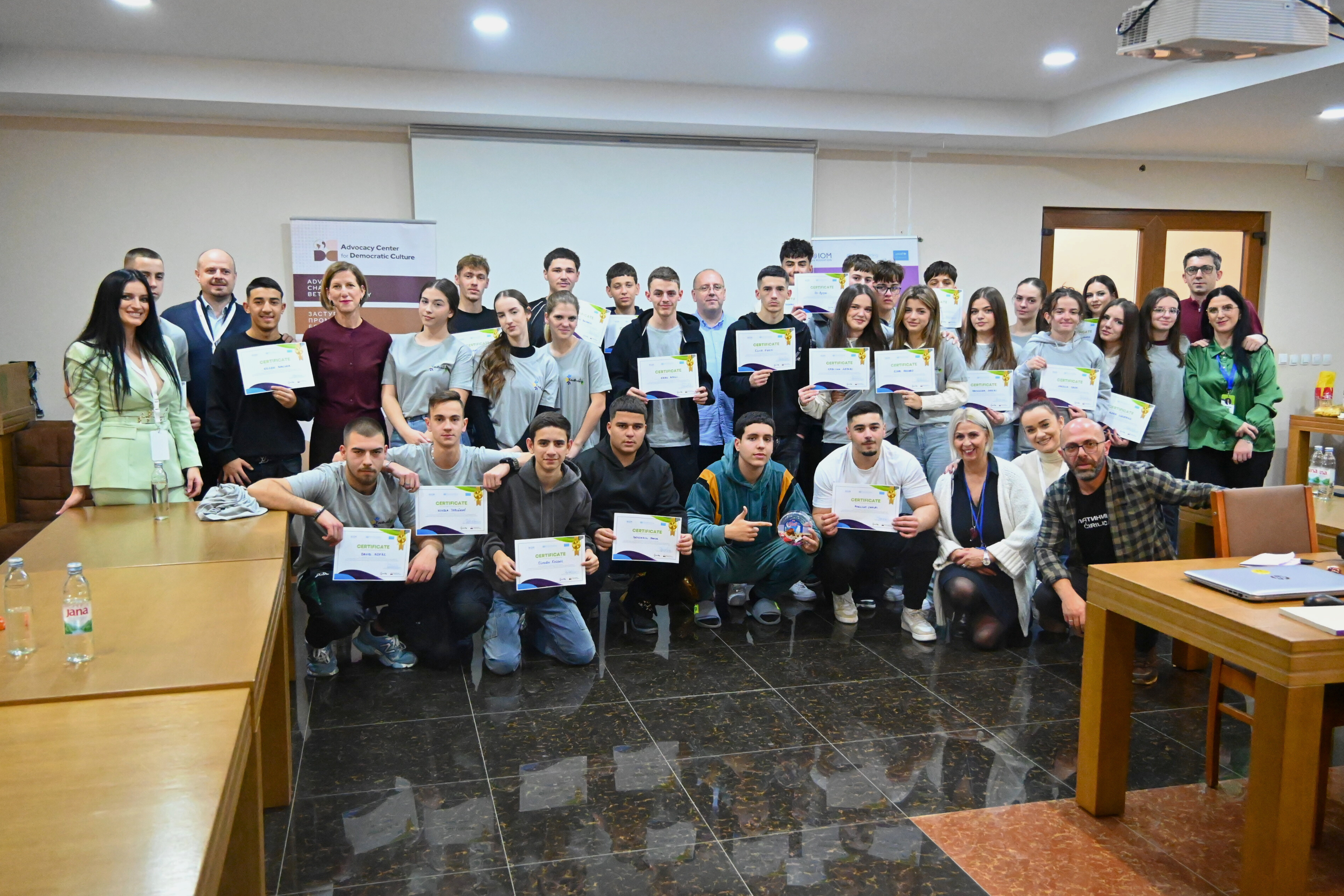20.09.2024. » 05:50
#6 Prosecution file against Momir Pantic and Zarko Zaric, accused of war crimes in the municipality of Istog - 1998/99
The trial against Momir Pantic and Zcarko Zaric, accused of war crimes against the civilian population, began on Monday 16.09.2024 in the Court of Pristina.

The trial against Momir Pantic and Zcarko Zaric, accused of war crimes against the civilian population, began on Monday 16.09.2024 in the Court of Pristina.
According to the indictment dated 01.09.2024, the defendant Momir Pantic and Zarko Zaric are accused of having committed war crimes against the civilian population during the years 1998-1999, in the Municipality of Istog, in collaboration with other members of the Serbian police forces.
This case is led by judge Valon Kurtaj, while the prosecution is represented by prosecutor Ajshe Ferati. The defense is led by lawyers Dejan Vasić and Nebojsha Vlajić.
In Monday's session (16.09.2024) after a brief consultation with their clients, the defense lawyers stated that there are no legal conditions for the trial to begin as they received the indictment in Serbian on Friday, while their clients did not receive the charge in any of the Kosovo’s official languages.
Also, the defense requested additional documentation, files and evidentiary materials to be used against their clients.
They emphasized that their clients have already been in custody for a year and that they still do not know what exactly they are accused of and therefore cannot plead guilty.
According to the lawyer Dejan Vasic, the police conducted an investigation while his client was in custody, but did not inform the defense about the direction the investigation is going, nor did they cooperate with the defense lawyers, nor did they share with them the evidence they found.
The defenders stated that due to these conditions, they could not start the trial, in addition to everything else, the deadline for possible appeals in this process would begin to expire.
The prosecution has undertaken to deliver the indictment and other documents from this case to the accused in custody as soon as the translation is completed.
What the prosecution file says?
According to the indictment dated 01.09.2024, the defendant Momir Pantic and Zarko Zaric are accused that during the years 1998-1999, in the Municipality of Istog, in collaboration with other members of the Serbian police forces, they acted in serious violation of the rules of international law.
According to the indictment, Momir Pantic, under individual responsibility and command responsibility as Chief of the Police Station in Istog, committed murder, torture, inhumane treatment, intimidation, destruction of property, mass deportation and ethnic cleansing of the civilian population of Albanian nationality in the Municipality of Istog.
According to the first provision of the indictment in March 1998 in the village of Lubozhdë, Municipality of Istog, the Serbian police forces under the leadership of the defendant Pantic, conducted a police operation against the Pepaj family, and that in the early hours of the morning they entered to the Pepaj neighborhood and they took all the men out of their houses, beating them and hitting them with the tip of the gun in different parts of the body.
Further, in the indictment it is said that after the same people take them out into the street, they order them to lean against the wall-circle in the yard of Afrim Pepaj's house, they always check them at gunpoint and after separating the young from the old, the elderly people released, while the injured XH. P., I. P., I. P., SH. P., J. P., A. P., R. P., N. P., and SH. P., who were of young age, put them in their official cars and sent them to the Police Station in Istog and beat and tortured them in the most inhuman way.
In the second provision of the indictment, it is stated that during the month of March in 1988, in Istog under the leadership of the defendant Pantic, they attacked with automatic weapons the citizens who were protesting in a popular protest due to the massacre of the Jashari family in Prekaz.
Further, while the protestors were going towards the center of Istog, they were ambushed by the police forces, who initially demanded that the protestors disperse, but after this order was peacefully ignored by the protestors, they continued the march, the defendant Momir Pantic, in the role of the chief of the Police Station in Istog, had ordered the Serbian police forces, telling them in the Serbian language "pucajte", at that moment the police had implemented the given order and started shooting at the protesters.
Further, the indictment states that many protesters were injured by these shots, and R.M. and H.SH. were seriously injured, then the protesters were dispersed and in serious condition some were treated at home and some in the ambulance.
According to the third provision of the indictment, on 29.08.1998 in the village of Shushicë, Municipality of Istog, the police forces under the leadership of the defendant Pantic around 06:00 in the morning while the members of the Salihaj family were in their house, noticed that the hay was burning and went out into the yard to see what was happening, they noticed that they were surrounded by members of the Serbian police from the Police Station in Istog, who were armed with long guns and armored cars and the same immediately opened fire in the direction of the house of the injured I. S.
According to the Prosecutor's Office's file, many people were injured and 9 members of the Salihaj family were killed, while the women and children were forced to leave the house, but the victim F. S. refused to leave the dead body of her son H., and stayed at home, while in the evening the police ordered the bodies of the victims to be buried - which happened on 30.08.1998.
The indictment states that when the bodies of the victims I. S., SH. S., A. S., H. S., H. S., M.S., A.S., N.G., (nephew of the Salihaj family) were buried in the village cemetery, while the fate of F.S. was not understood until her lifeless body was found in the village of Padalishte.
In the fourth provision it is stated that in the fall of 1998, in the evening hours, in the village of Lubozhdë, the Serbian police forces mistreated the injured S.K., G.M., and G.B., while the injured were returning from the mountain, upon reaching the place of called "Dagiq" were stopped by four policemen from the Istog Police Station, among them was the defendant Zarko Zaric, who were armed with long guns and uniformed in Serbian police uniforms, mottled blue.
Further, in the file it is said that first they took the injured off the tractor and laid them on the ground, then they started beating and physically torturing them by hitting them with Kalashnikov butts and kicking them in different parts of the body.
According to the Prosecution's file, at one point the defendant Zaric had caught the injured S, lifting him from the ground and backed him up by the tractor, at that moment another tractor had passed by with lights, and since it was dark, the injured had seen the face of the defendant to whom he had addressed with the words "Zarko, you are!", for which the defendant Zaric had revolted and put the barrel of the machine gun in his mouth, tearing his lower lip on the right side and hurt the roof of his mouth, in which case the victim started bleeding from the mouth, and after these physical and mental abuses, the victims were released to continue their way home.
According to the fifth provision of the indictment, in the month of March 1999, in the village of Lubozhdë, the Serbian police forces, where the defendant Zarko Zaric was a member, under the leadership of the defendant Pantic, attacked the neighborhood "Pepaj", first they went to the house of I.P., who is told to notify the inhabitants to leave their houses for 3-4 hours, so the inhabitants were forced to leave their houses and go towards the village of Studenica.
In the indictment it is said that A. P. had stayed at home, but after 2-3 weeks he had left the house and had joined other family members, who were staying in the village of Studenica, and there he had told them that while he was staying at home with I. and G., the defendant Zarko Zaric together with some other policemen had gone there.
Firstly, A. and I. were taken out of the house into the yard, while G. remained inside the house, then defendant Zarko and the other policemen entered the house and, in the room, where G. was staying, they killed him and they left the house, while A. and I. had returned inside the house and at that moment, they had seen G., killed and cut in the throat.
In this provision of the indictment it is stated that while the defendants had left going house to house, checking and then setting fire to each house, in which case the following were killed by this action of the Serbian forces: A.P., G.P., A.P., B. D., an old woman of the Qetin family.
In the sixth provision of this indictment, it is stated that at the end of March 1999, in the village of Vreniq, the Serbian police forces of the Police Station in Istog, under the leadership of the defendant Pantic, ordered the residents of the village of Vreniq to leave their houses and to leave for Albania, but most of the inhabitants of the village of Vreniq took refuge in the mountain of Starasella above the village of Shushicë, since many inhabitants of the surrounding villages were already staying there.
Further, in the indictment in this provision it is stated that after several days of staying on the mountain, on 04.05.1999, the Serbian police forces started shelling from both sides of the Starasella, trough, which forced the civilians to move towards Istog through Gurakoc, which along the way they had seen how the entire village of Shushicë was burning, while every time they had encountered Serbian armed forces, they had been mistreated and brutally beaten by these forces, as well as their money and valuables were taken.
Further, it is said that near the village of Landovicë, the column of civilians was forced to turn back to Istog, but that they had nowhere to go as their houses were all burned and over 700 people were placed in the Primary School "Martin Camaj" in the village of Kovragë, where they stayed around for 10 days.
On the other hand, on 04/06/1999, around 4:00 p.m., a moving car, according to the Prosecutor's Office file, fired at the Albanian civilians who were in the yard of this school, killing B. B., 13 years old. During their stay in this school, the Albanian civilians were visited by Momir Pantic, who asked them if there was a KLA soldier in the school, while after a few days the policemen from the Gurrakoc police station ordered all the civilians sheltered in that school to leave and continue on their way to Albania.
According to the seventh provision, on 26.03.1999, in the village of Padalishte, Municipality of Istog, the Serbian police and military forces of the Police Station in Istog, under the leadership of the defendant Pantic, first surrounded the village of Padalishte and then began shelling it from a distance destroying houses and killing many civilians.
Further, it is said that the policemen of the police station in Istog entered the village and searched house by house removing all the civilians from their houses, as a result of this operation by the Serbian forces, around 19 members of the Imeri family were killed.
In the eighth provision of the indictment, it is said that on 27.03.1999 in the village of Shushicë, the Serbian police forces of the Police Station in Istog, under the leadership of the defendant Pantic, ordered the inhabitants to leave their houses and as a result of this order and fearing that they will kill them, they had left their homes and settled on a mountain near the village where they had stayed for several days.
Further, it is said that the same people were forced to leave that shelter because the Serbian military forces had ordered their move to Albania, so that until they left the village all the way these civilians were mistreated and tortured by the Serbian forces.
The file further states that upon arriving in Prizren, these citizens were stopped by the Serbian forces who had turned them back to Istog and upon reaching Istog, the Serbian police forces of the Police Station in Istog, under the leadership and implementation of the orders of the defendants Pantic had stopped them and had first placed them in a warehouse.
Further, it is said that after 2 or 3 days they were placed in the houses of the "Alushaj" family, and at that time the injured H. A. was pregnant and on 30.05.1999 she gave birth to her daughter D., in very difficult conditions for livelihood, and with great difficulty they had stayed until the end of the war.
According to the ninth provision of this indictment, on April 1, 1999, in the early hours of the morning, the village of Cerrcë of the Municipality of Istog was the scene of a terrible and violent attack by the Serbian police forces of the Police Station in Istog, under the leadership of the defendant Pantic, who acted within the security structures, in such a way that the police unit of this station carried out a brutal operation against the Rexhaj family.
On this occasion, the attack began with the siege of I.R.'s house, and after securing the siege, the police forces undertook a merciless and well-planned action, killing six innocent members of the Rexhaj family: K.R., Z.R., I.R., SH. R., as well as R.R., who suffered from severe mental problems.
Further, in this provision, it is stated that after the murder of these family members, they did not stop with these crimes, but set fire to the house, leaving the dead bodies of the victims to burn inside to hide their crimes.
In the tenth provision it is stated that on 13.04.1999, in the village of Studenicë, the Serbian police forces of the Police Station in Istog, under the leadership of the defendant Pantic, attacked the Lipaj family, and that after entering the village from the direction of the village of Lubozhdë to the source of the village of Vrelle, in a systematic way they went house to house checking and burning the houses, as well as leaving a total of 14 civilians of Albanian nationality dead in the house of the now deceased S. Z.
9 of which were identified: F. L., -66 years old, S. L., - 35 years old, L. L., - 13 years old, S. L., - 64 years old, Q. L., - 15 years old and M. L., -13 years old, H. M., - 69 years old, Nj. L., - 14 years old, as well as S. Z., - 85 years old, whose house they had gone to in the early hours of the morning to prepare bread for the other members of his family who had taken refuge on the nearby mountain with other civilians.
Thinking that they were safe, these women and children had decided to go home to prepare bread for other family members, but from that day nothing was known about the fate of these civilians, until 25.06.1999 when the troops theirs were found killed in the well in the backyard of S. Z., by their family members, and with the help of the Spanish KFOR, the bodies were pulled from the well and identified.
According to the eleventh provision, on 08.05.1999, in the village of Staradran, the Serbian police forces of the Police Station in Istog, under the leadership of the defendant Pantiq, killed 15 civilians of Albanian nationality, while 2 people remained missing.
In the indictment it is stated that on the day of the event, the civilian citizens of this village were detained by the Serbian police and military forces, who first robbed them and then separated the men from the women, and after a short time attacked them with weapons, killing them in the courtyard. of the injured Mr. E., about 16 civilians of Albanian nationality, who were not participants in the armed conflict.
According to the indictment, these victims are: D. G., H. E., N. E., M. E., M. E., SH. E., N. E., A. E., I. A., M. D., B. D., R. SH., G. I., B. M. and J. A., while the sixteenth person N. E. survives the attack.
The indictment states that the dead bodies of the killed civilians were buried in a mass grave, all together, by members of the Roma community who were ordered by Serbian police and military forces.
According to the twelfth provision, on 08.05.1999 the Serbian police forces, acting under the command responsibility of the defendant Pantic, as Chief of the Police Station in Istog, surrounded the village of Staradran, and as a result of this action, the inhabitants of this village They were forced to leave their homes and join the convoy to go to Albania.
However, when they reached the village of Zallq, they were stopped by Serbian forces who were uniformed in camouflage uniforms with red ribbons in their hands, among them was the commander of the Gurakoc Police Station, Milos Stojkvic, Ekrem Bajrović, Moma Salutić, as well as the police Serbian with the nickname "Banjaci".
Further, in the indictment it is said that they had separated the men from their families and after the separation they had put them in a shop in Shalaj, while their families ordered them to continue going towards Klina, so they kept them in this place until at 17:00 in the evening, while later with a big truck they sent about 100 prisoners to the Gurakoc Prison, whose treatment had been cruel, beating them to death.
According to the indictment, in the prison of Gurakoc, the injured were interrogated by two Serbian policemen in civilian clothes, among whom was the defendant Momir Pantic.
According to the thirteenth provision, on 19.05.1999, the village of Dubrava, Municipality of Istog, precisely in Dubrava Prison, ward "C" of Dubrava Prison was bombed by NATO forces, as a result of which 3 were killed. prisoners of Albanian nationality.
Immediately, the Serbian police forces, which were under the command of the defendant Pantic as Chief of the Police Station, had gone to the Duburava prison, to take control of the situation, where due to the attack, the prison guards in question had stayed outside the prison walls, and due to the situation created, due to the detonation, some of the doors of the prison rooms were opened, while others were opened by the prisoners with what they could and stayed in the prison yard.
Further, it is said that after the bombings stopped, the Serbian forces composed by guards and special units from the Police Station in Istog, entered the prisoners' rooms and used systematic violence, in the way that the accused Gavrilo Milosavlevic had gone with with other members of the staff employed in the prison of Dubrava, in which case they beat them in a cruel and inhumane manner, as well as insulted and abused the Albanian prisoners physically and mentally, without any reason, just because they were Albanians.
In the indictment, it is said that the NATO bombings continued on 21.05.1999, where the pavilions and other accompanying facilities of the prison were hit, except for the sports hall, in which case 18 Albanian prisoners were killed and dozens of others were injured.
Further, on the morning of 22.05.1999, guards, armed Serbian prisoners together with police forces and Special Units who were under the command of the Police Station in Istog, first gathered the Albanian prisoners in the sports field, lined them up towards the wall on the grounds of counting and transferring to a safer place.
Immediately, after lining up and dividing into groups, the prisoners saw that on the left and right side of the guardhouse, guards and uniformed and armed Serbian civilian members came out of the guardhouse and from the walls of the prison they started firing guns of different types from all sides of the prison in their direction, while from behind the prison wall they fired bombs at the Albanian prisoners, where some of the lined-up prisoners managed to escape by falling to the ground.
As soon as the shooting started, they ran away and hid in buildings inside and outside the prison, while some of them hid in wells, but the guards, the prison staff, along with the paramilitary forces and the police, started chasing and killing them by jumping on them, throwing hand grenades inside the wells, where many were killed and some injured.
Further, in this provision, it is said that a number of prisoners managed to escape by rolling to a part, which was lower than the sports field, where they managed to protect themselves from gunfire, some behind a pile ground, and from there they took shelter in the kitchen basement, some prisoners fled to the shore and some were taken as a refuge in the prison facilities because the sniper shots continued from other prisons, so that the surviving prisoners began to pull them the wounded to give you medical aid, but the Serbian guards and members of the guardhouse from time to time continued to observe and shoot with snipers, from which they also killed other prisoners.
Further, on 24.05.1999, the defendant Pantic leads the policemen of the Police Station in Istog, and under his command, the wounded and prisoners were removed from Dubrava prison.
According to the fourteenth provision of this indictment, the Serbian police forces of the Police Station in Istog, under the leadership of the defendant Pantic, kidnapped the victim with the pseudonym "A1", a male civilian of Albanian nationality and sent him to the prison of the Gurakoc.
The same was initially interrogated by some officials of this station in civilian clothes and during his stay in prison for several days, he was taken by some members of the police and taken to a special place of the prison facility, where he was sexually assaulted.
According to the fifteenth provision of this indictment, the Serbian police forces of the Police Station in Istog, under the leadership of the defendant Pantic, the victim with the nickname "B1" was invited by the police to appear at the Police Station in Istog to be taken into custody interrogation.
Furthermore, when she arrived, she was first interrogated, then physically beaten and then sexually assaulted by a policeman from this station, in the presence of 5 other policemen.
According to the sixteenth provision of the indictment, the policemen of the police station in Istog together with the members of the police and military forces of Serbia and the FRY, under the leadership of the defendant Pantic, participated in the deportation, looting and destruction of the property of the civilian population of Albanian nationality.
Initially, it is said that they forcibly expelled the civilian population from their homes by going house to house, in which case they removed hundreds of thousands of residents from their homes in all the villages of the Municipality of Istog, and after the departure of the population, initially they looted the property of the civilians and then set fire to every house in every village of the Municipality of Istog, completely destroying the property of the civilian population, about 5 thousand houses were burned, 260 people were killed, 19 victims were children and many other material damages.
With this, the defendant Momir Pantic is accused of having committed the crime of war crime against the civilian population as an accomplice, of the Criminal Law of the former Socialist Federal Republic of Yugoslavia (hereafter "LP of RSFJ") as the law in force in the time of the commission of the criminal offense, currently incriminated as a Crime against humanity.
According to the indictment, the defendants Zarko Zaric and Momir Pantic are accused that during the years 1998-1999, in the Municipality of Istog, in collaboration with other members of the Serbian police forces, they acted in violation of the rules of international law.
According to the indictment, the defendant Zarko Zaric, in his capacity as a police officer of the Police Station in Istog and as an executor of orders, committed murder, torture, inhumane treatment, intimidation, destruction of property, mass deportation and ethnic cleansing of the Albanian population in the Municipality of Istog.
According to the indictment, the policemen of the police station in Istog together with the members of the Serbian and FRY police and military forces, under the leadership of the defendant Pantic and with the participation of the defendant Zaric, participated in the expulsion, looting and destruction of property of the civilian population of Albanian nationality, in such a way that they initially forcibly expelled the civilian population from their homes.
Further, it is said that by going house to house, they removed hundreds of thousands of residents from their homes in all the villages of the Municipality of Istog, and after the departure of the population, they first looted the property of the civilians and then set fire to each house. in each village of the Municipality of Istog, completely destroying the wealth of the civilian population.
As a result, about 5,000 houses were burned, 260 people were killed, 19 victims were children and many other material damages.
With these actions, there is a well-founded suspicion that the defendant Zarko Zaric, in complicity, has committed the criminal offense of War Crimes against the civilian population, of the Criminal Law of the former Socialist Federal Republic of Yugoslavia (hereafter "LP of RSFJ") as law in force at the time of the commission of the criminal offense, currently incriminated as "Crime against humanity".
Latest news







